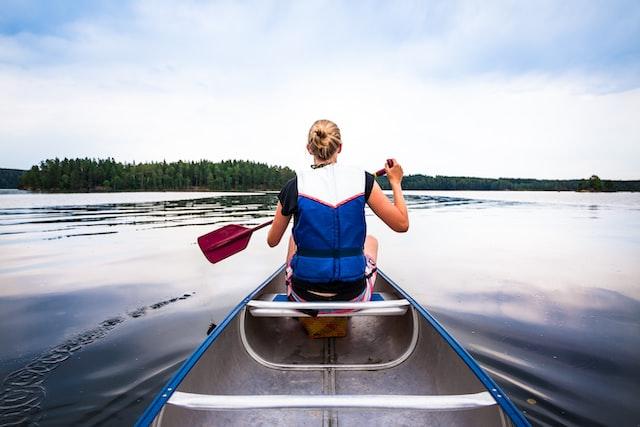People are initially introduced to canoeing either in summer camps or on day trips to parks where they can be rented. These “chance” encounters with canoes invariably unearth a passion in people who were born to paddle. They can’t get enough of that freeing feeling of gliding along on the surface of the water. At some point, these same people will decide they want to own their own canoe. Knowing how to choose a canoe at first might seem like a simple task. There doesn’t seem to be much to canoes and the fact that they are designed for different purposes is often not on the radar of soon-to-be canoe owners. Here are some considerations to help you choose your first canoe.
What Type of Canoeing Will You Do?
Before you can choose a canoe you will need to answer two main questions. First, why do you want to canoe? Secondly, how or where do you plan to canoe? Knowing why you want to paddle and where you will primarily be paddling will help you to figure out what type of canoeing you want to do. These answers to these questions will help direct the decision-making process regarding which type of canoes you should purchase. Some of the different types of canoes are recreational canoes, whitewater canoes, racing canoes, canoes for camping, and canoes for fishing to name a few.
Solo or Tandem Canoeing?
Once you know the type of canoeing you will be doing, you will need to decide if you will mainly be paddling with someone else or if you plan on canoeing alone. Every genre of canoeing has either solo or tandem canoes. It’s really a matter of what suits your needs in this regard. Paddling with another person, known as tandem canoeing, is the most common and the best for beginners. Learning to paddle a canoe solo is an endeavor for intermediate and advanced canoeists since the paddler will have to know a number of different canoe strokes to keep the canoe moving in a straight direction.
Canoe Size Considerations
Canoes come in a variety of sizes regardless of the type of canoeing that is being done. Canoe size is determined by three main measures: length, width, and height. There are pros and cons to each of these dimensions being larger or smaller. So, size in each of these measurements is really a tradeoff to get the performance that suits your paddling style.
Longer canoes will “track” or go straight better but they are less maneuverable and take more effort to get them moving at a nice speed. Shorter canoes will turn easier and are affected less by currents but they are tougher to keep going straight. Obviously, a tandem canoe will be longer than a solo canoe. Longer canoes also hold more gear.
The width of canoes affects the degree of “tippyness” that is felt in the boat. Wider boats are more stable and hold more gear but they can also be more sluggish. Narrow boats, while faster, are also less stable.
The third and final dimension that is of consideration when it comes to a canoe’s size is the depth of the canoe. This is the height of the canoe. Deeper or higher canoes will let less water in but feel more wind resistance. Lower height canoes don’t have as much issue with the wind but they can take on water if the canoe is leaned too far to a side or in choppy water.
Other How to Purchase a Canoe Considerations
This article basically sums up what a beginning paddler will need to consider when buying a canoe. Of course, as with every sport ,there are many more things that can go into choosing a canoe. The advanced paddler, for instance, may also look into such as shape and materials that go into the design of the canoe. However, armed with the above considerations, you will be ready to make an educated decision toward purchasing your first canoe.

